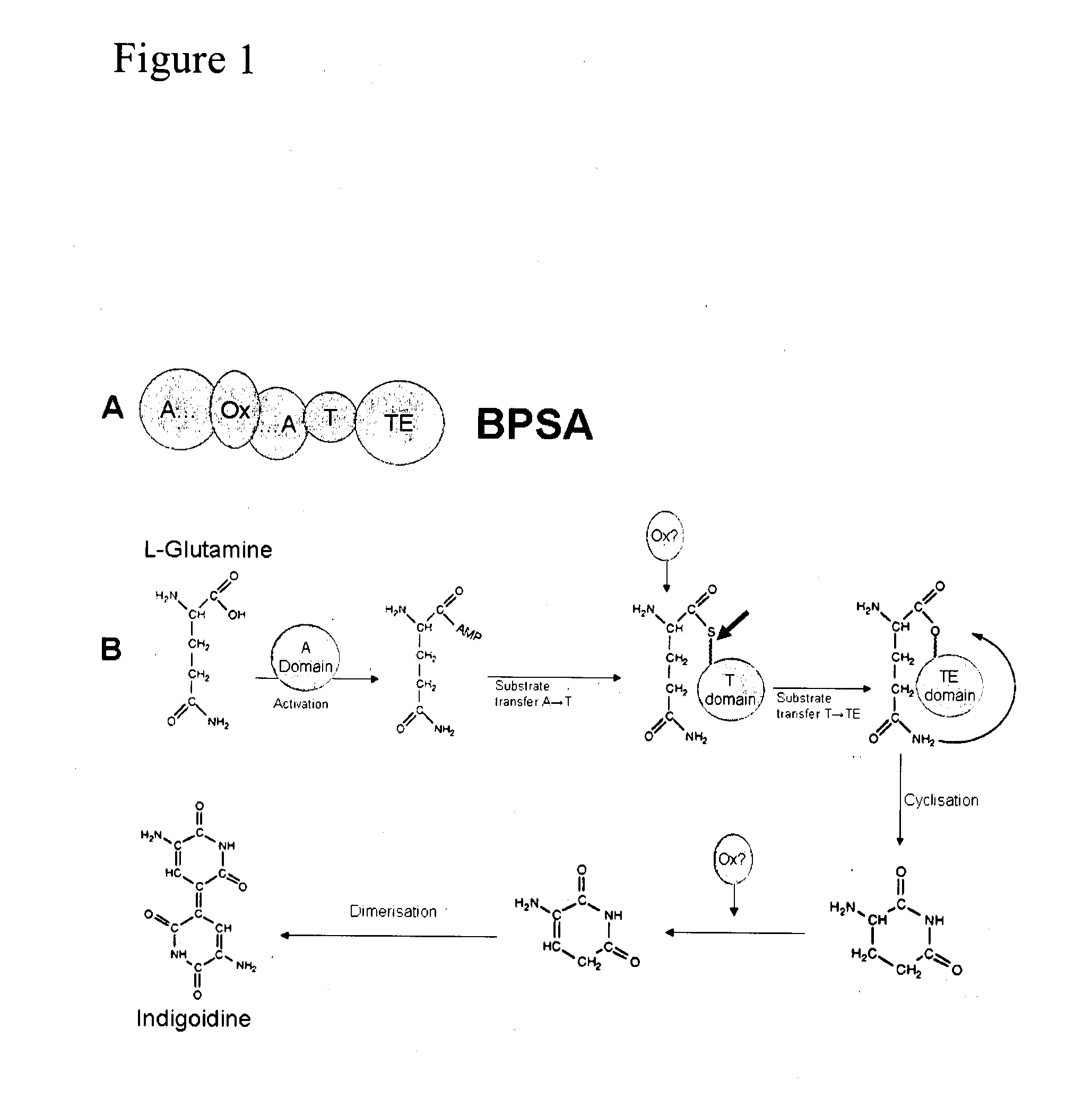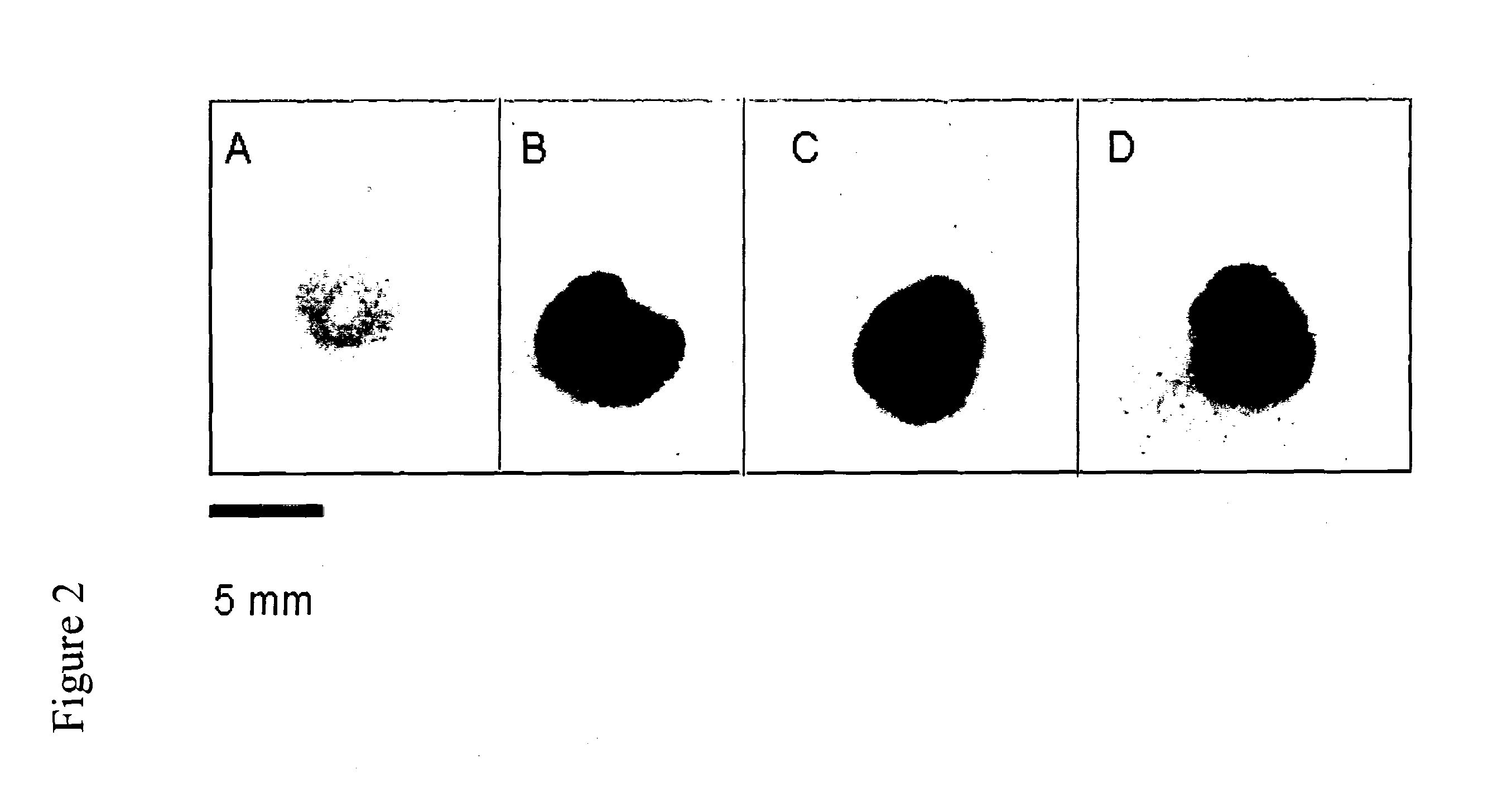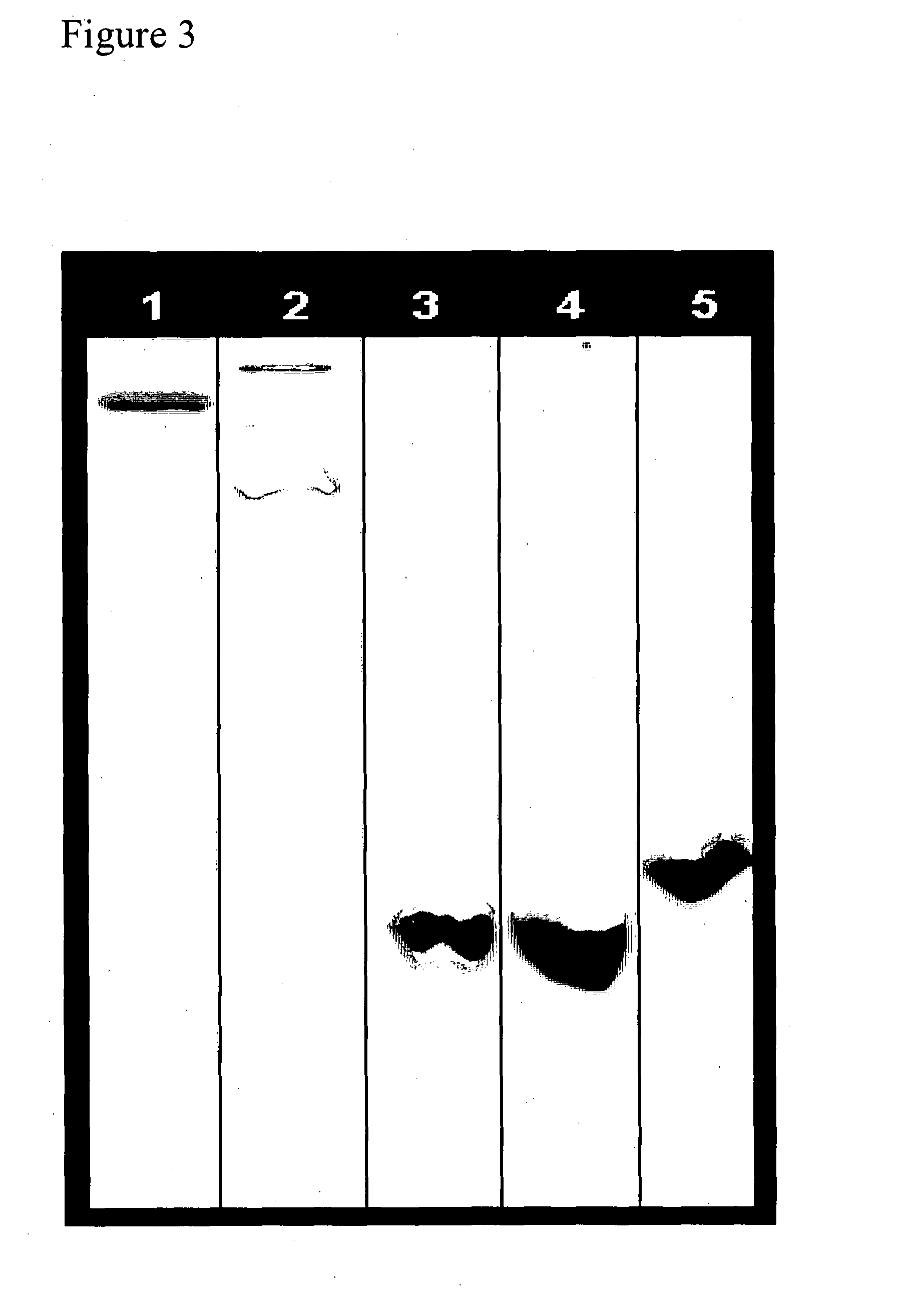Methods of Identifying and Characterizing Natural Product Gene Clusters
a technology of natural product and gene cluster, which is applied in the field of methods for identifying and characterizing natural product gene clusters, can solve the problems of inability to easily adapt to high throughput screening, phage screening methods can be quite time-consuming and prone to false positives, and inability to identify a partial fraction of npgcs in a sample, etc., to achieve rapid and reproducible screening results
- Summary
- Abstract
- Description
- Claims
- Application Information
AI Technical Summary
Benefits of technology
Problems solved by technology
Method used
Image
Examples
examples
[0383]Example 1—in vivo characterisation and in vitro kinetic analysis of phosphopantetheinyl transferases using the single module NRPS protein BpsA . . .[0384]1.1—Overview: . . .[0385]1.2—Qualitative assessment of PPTase activity in vivo by co-expression with a BpsA reporter in E. coli . . . [0386]1.3—Purification of BpsA and PPTases from E. coli . . . [0387]1.4—Preliminary in vitro analysis of BpsA . . .[0388]1.5—Derivation of kinetic parameters for BpsA . . .[0389]1.6—Derivation of kinetic parameters for PPTase enzymes using a BpsA coupled enzyme assay . . .[0390]1.7 Estimation of kinetic parameters for other carrier protein substrates using a BpsA coupled assay . . .[0391]1.8 Evaluation of PPTase inhibition by 6-nitroso-1,2-benzopyrone . . .[0392]1.9 Recovery of 6-NOBP and novel PcpS inhibitors from the LOPAC1280 compound library . . .
Example 2—Recovery of PPTase and secondary metabolite genes from a soil derived small insert environmental DNA library using the unmodified bpsA g...
example 1
In Vivo Characterisation and In Vitro Kinetic Analysis of Phosphopantetheinyl Transferases Using the Single Module NRPS Protein BpsA
1.1—Overview:
[0452]In the following examples, the inventors outline the development of a novel system for characterisation of PPTases that uses the single module NRPS protein BpsA (Takahashi et al, 2007) as a reporter for determination of PPTase activity in vivo and determination of PPTase kinetic parameters in vitro. As outlined in FIG. 1, BpsA catalyses the conversion of L-glutamine into the blue pigment indigoidine. In order to carry out this pigment synthesis reaction, BpsA must first be recognized and activated by a cognate PPTase enzyme. This dependence on PPTase activation allows BpsA to be used as a reporter to monitor PPTase activity. Using BpsA as a reporter, it is possible to qualitatively discern PPTase activity in vivo and accurately derive kinetic parameters in vitro in a 96 well plate (wp) format. Analysis of a previously uncharacterized ...
example 2
Recovery of PPTase and Secondary Metabolite Genes from a Soil Derived Small Insert Environmental DNA Library Using the Unmodified bpsA Gene as a Reporter
2.1—Overview:
[0463]As previously described in example 1, the BpsA protein of S. lavendulae is reliant on activation by an exogenous PPTase for function in E. coli. As a result, the gene for BpsA, when expressed in E. coli, has the potential to serve as colorimetric reporter for the discovery of PPTases in eDNA libraries of undefined composition and diversity. Existing evidence suggests that PPTase enzymes are often located within or near secondary metabolite biosynthetic gene clusters where they serve to activate NRPS and PKS enzymes (Marahiel et al, 1997). As such BpsA also has the potential to serve as a reporter for discovery of novel secondary metabolite clusters (SMCs) by association with a PPTase gene. To demonstrate the utility of BpsA as a reporter for recovery of PPTase genes and associated secondary metabolite biosynthesis...
PUM
| Property | Measurement | Unit |
|---|---|---|
| Fraction | aaaaa | aaaaa |
| Mass | aaaaa | aaaaa |
| Temperature | aaaaa | aaaaa |
Abstract
Description
Claims
Application Information
 Login to View More
Login to View More - R&D
- Intellectual Property
- Life Sciences
- Materials
- Tech Scout
- Unparalleled Data Quality
- Higher Quality Content
- 60% Fewer Hallucinations
Browse by: Latest US Patents, China's latest patents, Technical Efficacy Thesaurus, Application Domain, Technology Topic, Popular Technical Reports.
© 2025 PatSnap. All rights reserved.Legal|Privacy policy|Modern Slavery Act Transparency Statement|Sitemap|About US| Contact US: help@patsnap.com



